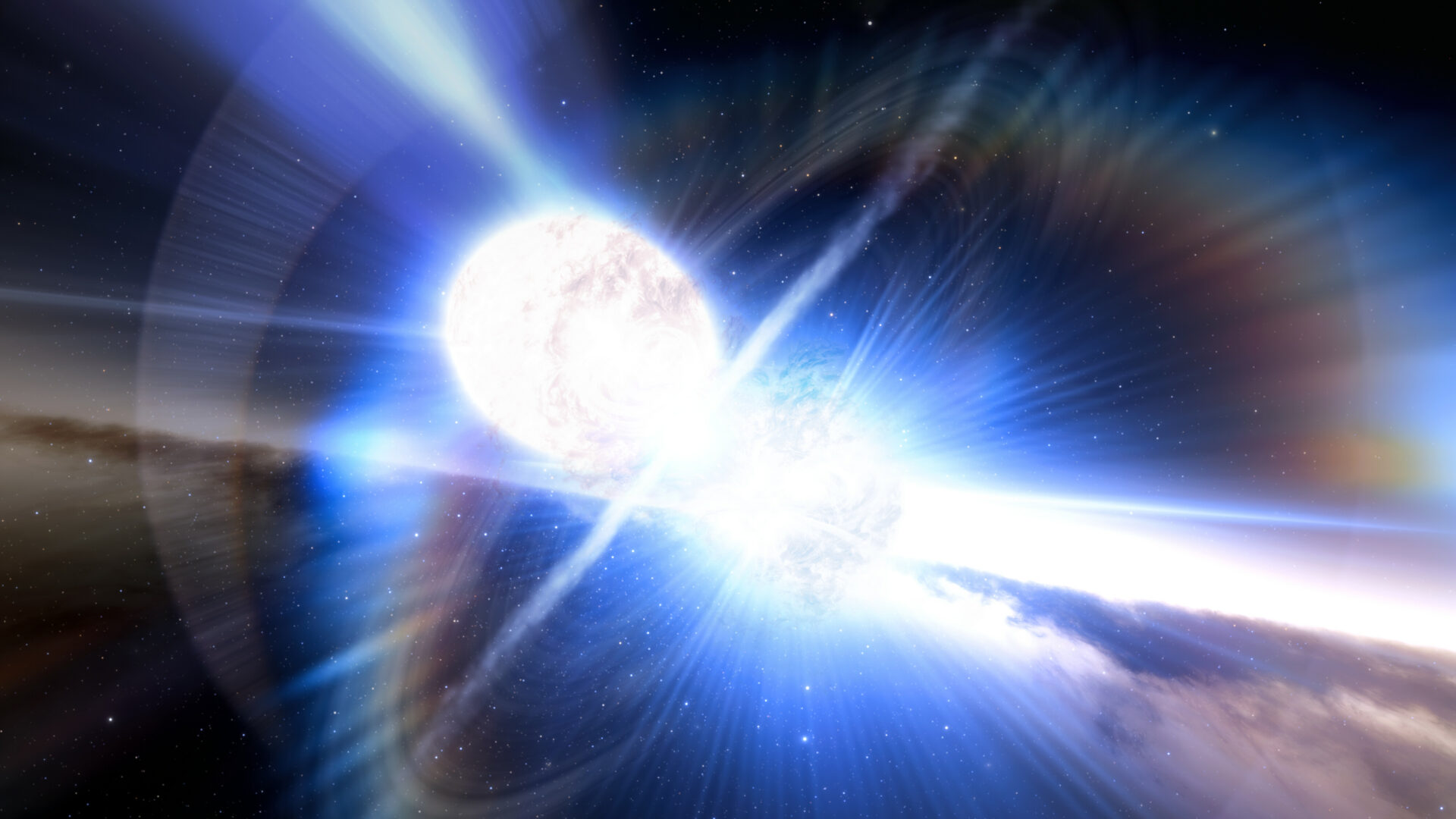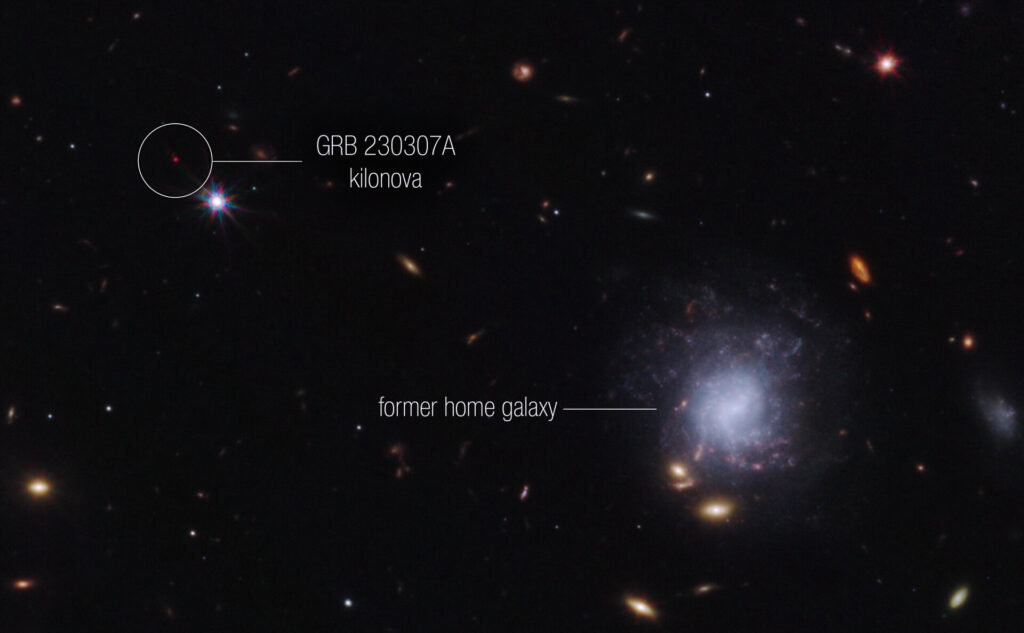During the study of a kilonova, which gave rise to the second-brightest known gamma-ray burst, astronomers discovered tellurium. The discovery made it possible to shed light on the nature of this phenomenon and the mechanisms of the formation of heavy elements.
Source of heavy elements in the Universe
At the time of its birth, our Universe consisted of hydrogen, helium and a small amount of lithium. All other elements were formed during stellar evolution and such extreme events as collisions of neutron stars. It is believed that in their course, conditions are provided for the synthesis of the heaviest elements.

The main problem associated with the study of colliding neutron stars is due to the fact that they are very rare and extremely transient. Nevertheless, modern astronomers already have the means to see them.
Record gamma-ray burst
In March 2023, the Fermi Space Telescope recorded a gamma-ray burst designated GRB 230307A. It instantly attracted the attention of astronomers. The fact is that GRB 230307A became the second brightest gamma-ray burst in more than 50 years of observations (its brightness was about a thousand times higher than a typical gamma-ray burst). In addition, its duration was 200 seconds. This makes it possible to classify it as long gamma-ray bursts.

As a rule, long gamma-ray bursts are associated with the death of massive stars. But GRB 230307A was an exception. During a series of intensive observations involving both ground-based and space telescopes (including James Webb), astronomers determined that it had a different origin and was associated with a kilonova flare. They arise as a result of the merger of super-compact objects — neutron stars or a black hole and a neutron star. In this case, we are talking about the collision of a pair of neutron stars.
Subsequent analysis of the James Webb data revealed traces of tellurium in the material ejected during the kilonova flare. This is the first time this element has been detected at the neutron star merger site. In addition, the James Webb data helped astronomers locate the explosion site more accurately. It is located at a distance of 120 thousand light-years from the spiral galaxy.
According to astronomers, it used to be a system consisting of two massive stars. Then they turned into supernovae, and the huge energy released during the explosions literally catapulted the pair beyond their home galaxy. In the future, researchers hope to find even more kilonovas, which will allow them to better understand the features of the formation of heavy elements in the Universe.
According to https://www.esa.int
Follow us on Twitter to get the most interesting space news in time
https://twitter.com/ust_magazine
